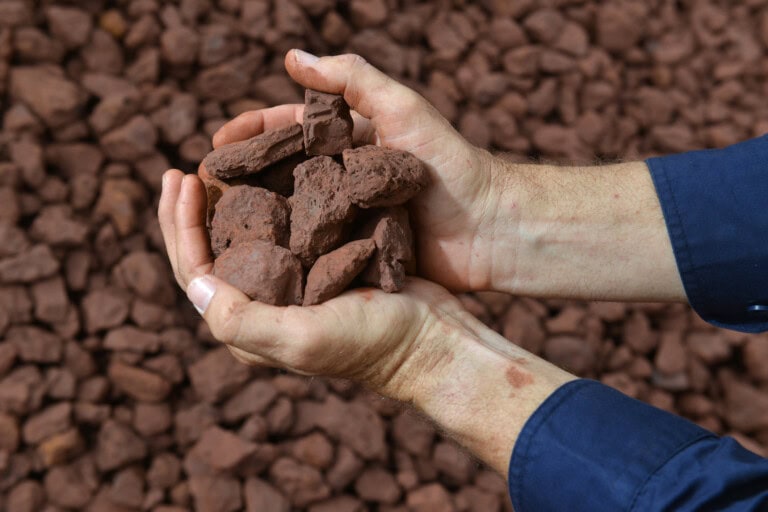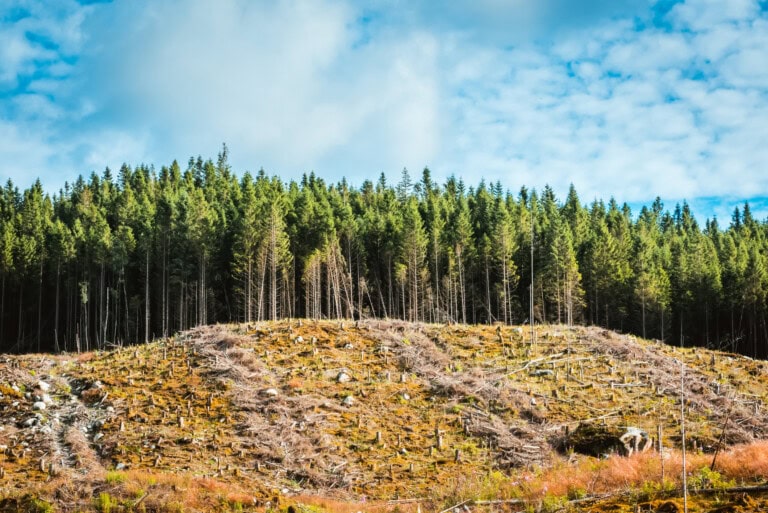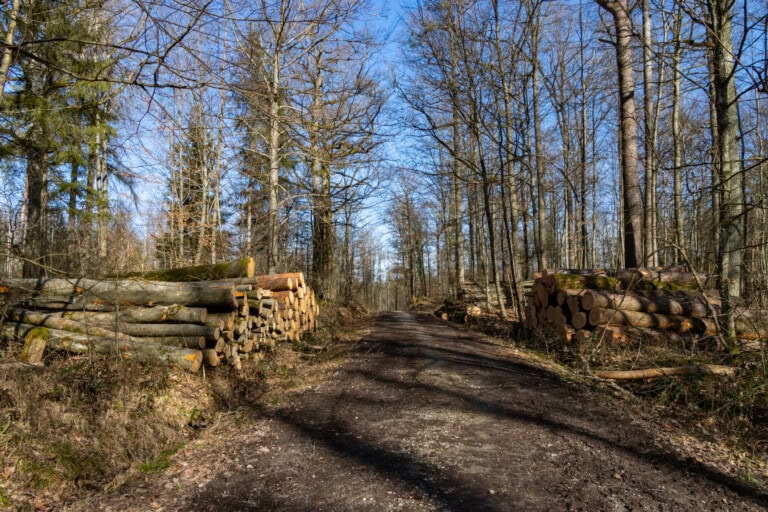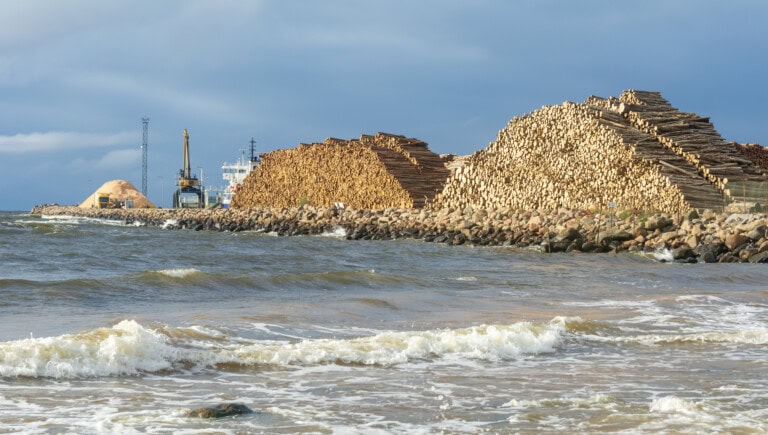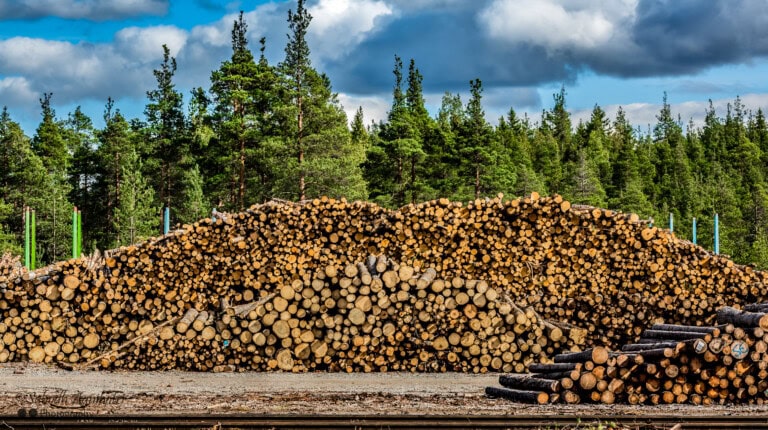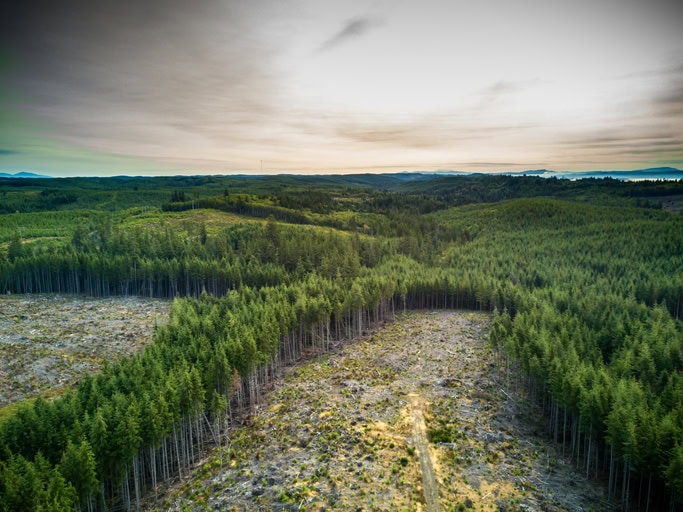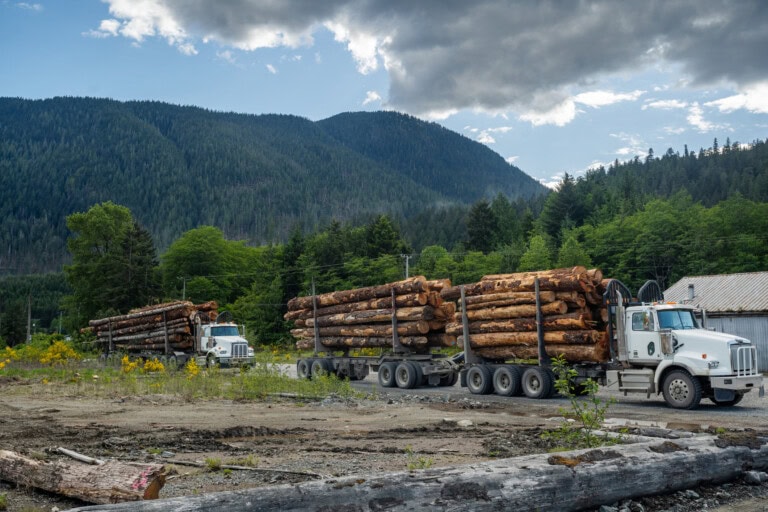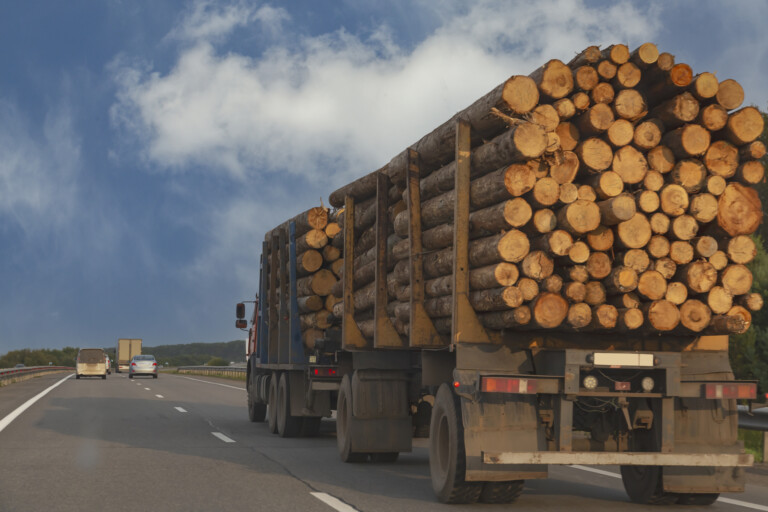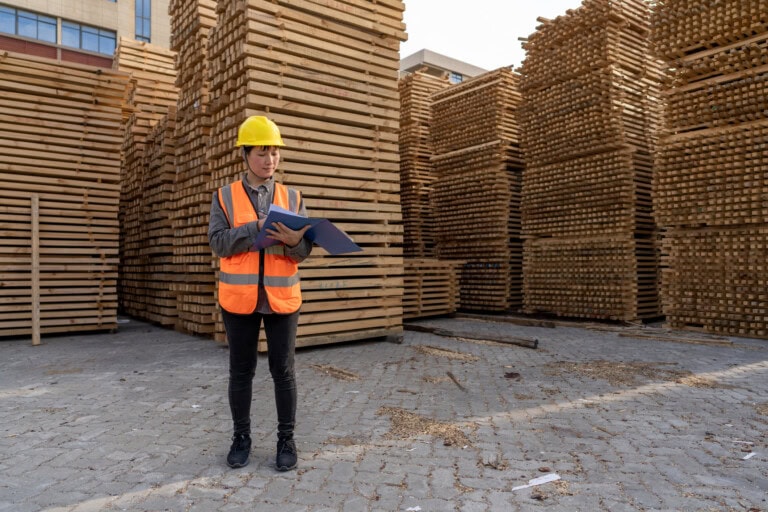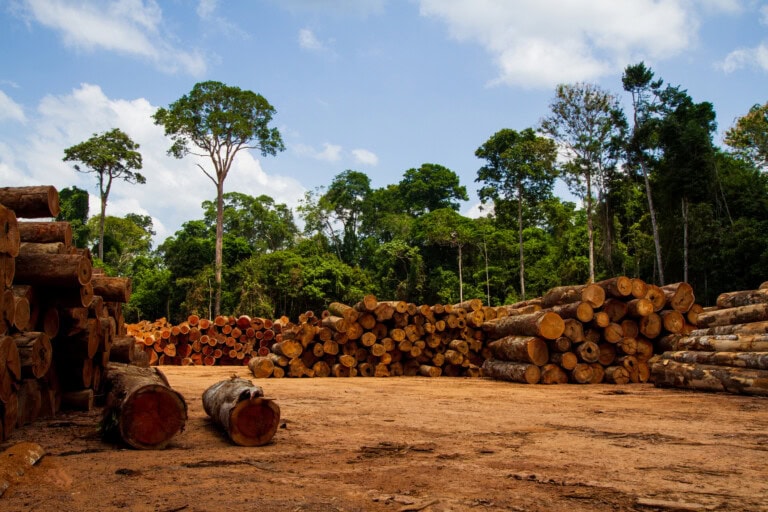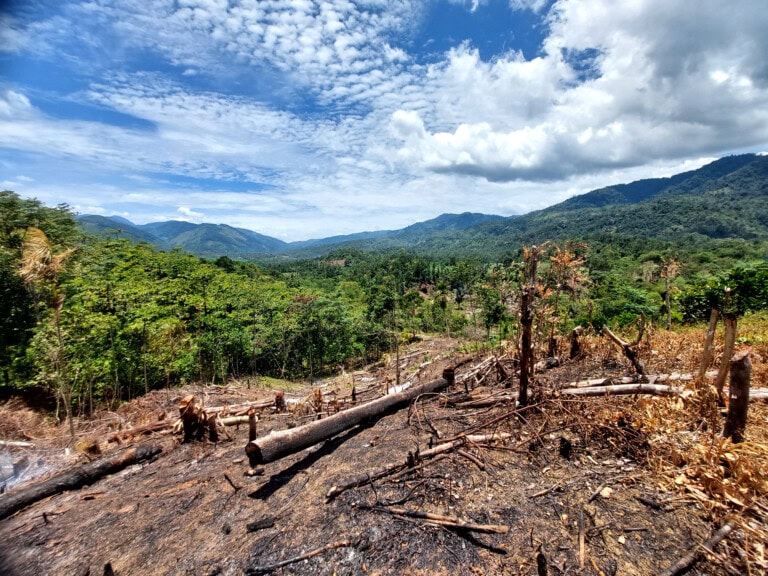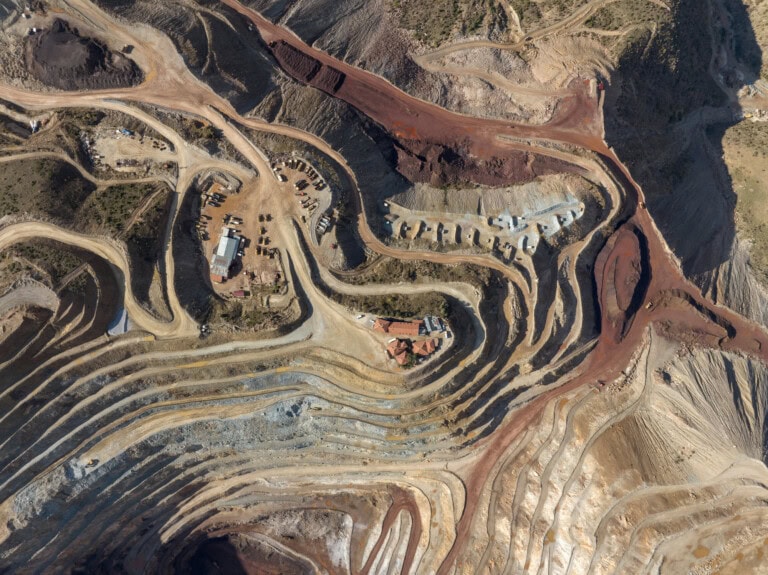Timber
As a renewable material with the ability to sequester carbon, the interest in timber has surged in our industry. The majority is used as sawn softwood and boards, while 1 percent is used to produce glue-laminated timber (Glulam) for load bearing elements such as rafters, or cross-laminated timber (CLT) for surfaces such as walls and floors. Timber is harvested in a range of countries worldwide, such as the US, China, Russia, and Brazil. The UK imports most of its timber from Europe, namely Sweden, Latvia, Finland, and Germany.
Key Statistics
Method of Extraction
- Logging of forests or plantations, with varying degrees of sustainable forest management, from clear-cutting to regenerative forestry.
Key Impacts
Soil erosion and compaction
Habitat loss and fragmentation.
Disruption of the water cycle
Indigenous and local community impacts
Existing safeguards and certifications
- Forest Stewardship Council (FSC). This certification sets standards for responsible forest management. and assures that the certified timber and wood products come from forests that meet environmental and social criteria. There are different types of FSC certifications, such as FSC 100% (all wood comes from FSC-certified forests), FSC Mix (a combination of FSC-certified and non-certified wood), and FSC Recycled (products made from reclaimed materials).
- Programme for Endorsement of Forest Certification (PEFC). PEFC works at both the global and national levels, endorsing national forest certification systems that meet their criteria. Unlike FSC, which has a centralized standard, PEFC operates through a decentralized system with multiple national standards.
Best practice and recommendations

Solutions
- Regenerative or low-impact forestry. Regenerative forestry prioritises ecological health over the short-term yield of timber harvesting. Maintaining canopy, minimise damage to soil, and careful removal of logs, together with cutting limits are some examples of how sustainable forestry can go together with conservation efforts.
- Integrative forest management. This approach recognises forests as complex ecosystems with a wide range of functions such as water regulation, carbon storage, and the provision of habitats alongside the need for timber harvesting.
Summary
Timber harvesting and conservation can go together if done carefully. While it is a material with potentially positive impacts, it should still be used in line with the resource mitigation hierarchy to avoid excessive pressures on forest ecosystems, and meet global demand through low-impact forestry.

Industry Solutions
IStructE
Example case studies of sustainable forestry.

Explore other materials
Aluminium
Aluminium ore, or Bauxite, is the raw material used for the production of aluminium, which is extensively used in construction for its anti-corrosive and lightweight properties. It is applied as a lightweight and structural material, for example in window and door frames, roofing, and cladding.

Aggregates
Globally, almost half (46%) of all primary aggregates are used to manufacture concrete and cement. Just over a quarter is used in roads and 2% is used for railway ballast. The rest is used to provide drainage, fill voids, protect pipes, provide hard surfaces, and in water filtration and sewage treatment processes.

Cement
Cement is a fine powder made from a mixture of limestone, clay, and other minerals, which is commonly used as a binder together with aggregates to make concrete. There are various types of cement, such as Portland cement, slag cement, and fly ash cement, each with different properties and uses.
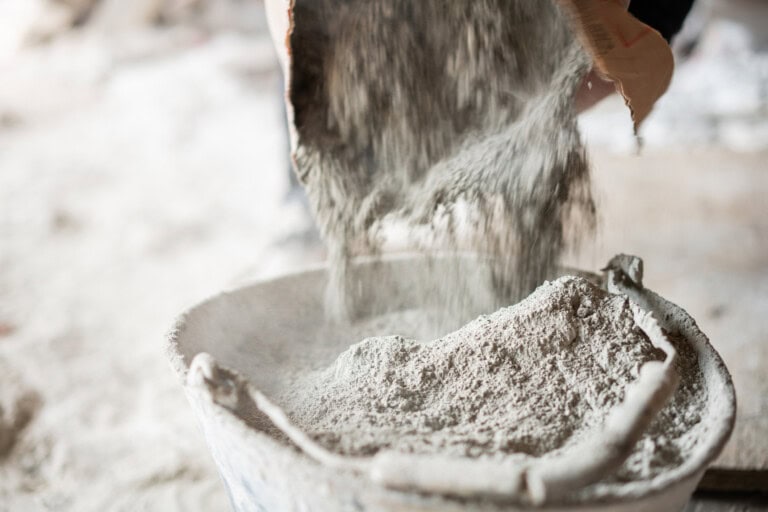
Iron Ore
Iron ore is a natural mineral deposit that contains iron in various concentrations and is the raw material for the production of steel. It is the world’s most extracted metal and the basis for the production of steel, one of the biggest commodities worldwide.
